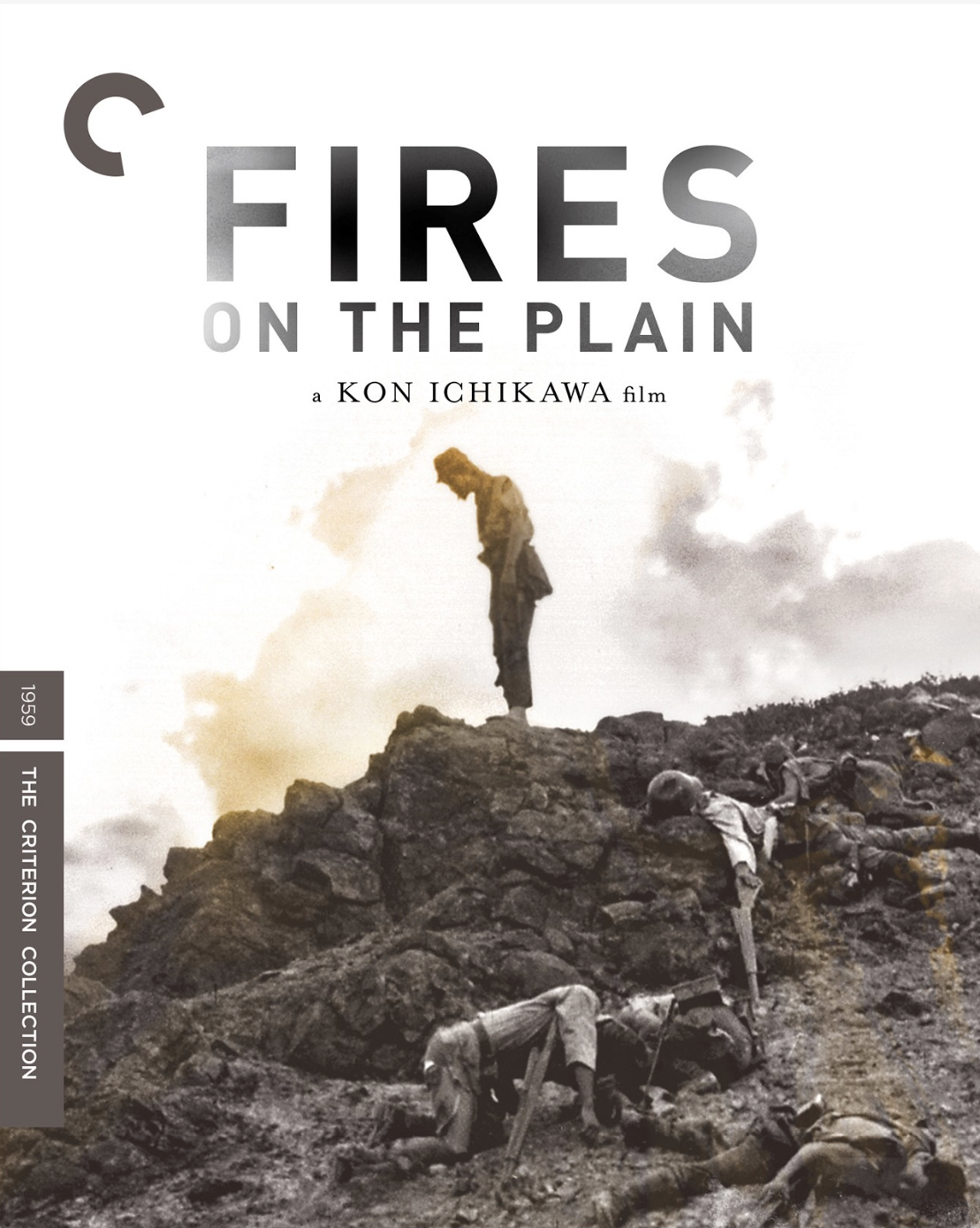

|
|
Fires on the Plain: The Criterion Collection
[Blu-ray 4K]
Blu-ray ALL - America - Criterion Collection Review written by and copyright: Noor Razzak (29th September 2025). |
|
The Film
 Kon Ichikawa’s "Fires on the Plain" (Japanese title - "Nobi") remains one of the most harrowing and unflinching depictions of war ever committed to film. Adapted from Shōhei Ōoka’s novel, the film follows Private Tamura (Eiji Funakoshi), a tubercular Japanese soldier stranded in the Philippines during the closing days of World War II. What begins as a simple struggle for survival descends into a chilling meditation on humanity stripped bare, as starvation, disease, and despair turn fellow soldiers into scavengers, deserters, and, eventually, cannibals. Ichikawa’s treatment of the material resists the romanticization of sacrifice that pervaded many postwar Japanese war films, instead presenting war as an existential void where human dignity corrodes under unbearable pressure. The film’s stark black-and-white cinematography by Setsuo Kobayashi enhances its unrelenting bleakness. The camera frequently frames Tamura as a small, almost swallowed figure against vast, indifferent landscapes. This visual language underscores the futility of survival in a world where nature and humanity alike offer no solace. The sound design is equally spare, relying on silences, scattered gunfire, and the hollow crunch of footsteps to convey a world emptied of order. Unlike the operatic grandeur of Akira Kurosawa’s wartime epics, Ichikawa’s approach is stripped, unsentimental, and grounded in physical suffering. Eiji Funakoshi delivers a remarkable performance as Tamura. His transformation from a frail, hesitant soldier into a gaunt, almost spectral wanderer anchors the film’s moral and physical disintegration. Funakoshi’s understated acting allows Ichikawa to avoid melodrama, instead evoking quiet horror in the way Tamura observes others succumb to madness, or how he reluctantly confronts his own capacity for violence. The character’s arc embodies Ichikawa’s thesis: that war annihilates not only bodies, but also the very structures of empathy and morality that define humanity. What makes "Fires on the Plain" particularly striking is its refusal to provide comfort. There is no catharsis, no heroic sacrifice, and no illusion of redemption. By daring to present Japanese soldiers as victims of circumstance yet capable of monstrous acts, Ichikawa challenged a national cinema still wrestling with guilt and denial in the 1950's. The film exposes the dehumanization inherent to war without moralizing, leaving viewers unsettled by the recognition that under similar conditions, anyone might collapse into the same abyss. In retrospect, "Fires on the Plain" stands as a watershed in Japanese war cinema. It bridges the humanist despair of postwar literature with Ichikawa’s own clinical, ironic worldview, resulting in a film that is both deeply personal and universally resonant. Its haunting imagery—gaunt figures stumbling through wastelands, the distant glow of fires marking both survival and destruction—continues to echo through cinematic history as a stark reminder that war’s truest battlefield is within the human soul.
Video
Presented in 2.39:1 widescreen and in 4K 2160p 24/fps mastered with HEVC codec, Criterion has released this film with an SDR transfer, no HDR or Dolby Vision enhancement here sadly. This appears to be a newer restoration than the previously released DVD version Criterion put out back in 2007. The resulting image is a little darker but sharper and features much more detail. The image is much cleaner, previous print damage as seen on the DVD no longer appear here, black levels are nice and bold, with white and grey scales looking good too. There's a nice level of grain structure that maintains the film's original look. Overall I'm pleased with this transfer despite the lack of HDR or DV.
Audio
A single audio track is included in Japanese LPCM 1.0 mono, the film's original audio track. Dialogue is clear, there are no instances of hiss, pops, crackle, or drop outs which can be problematic with films of this age. The film's subtle sound effects and score also sound good despite the limited range of the mono track. Optional subtitles are included in English for the hearing impaired.
Extras
Criterion has ported over all the previous extras from the 2007 DVD release. Below is a closer look at these supplements. DISC ONE: 4K UHD This disc features the film in 4K, no supplements are featured on this disc. DISC TWO: Blu-ray This disc features the film in 1080p HD and also includes the following supplements: A 2007 introduction by Japanese-film scholar Donald Richie (12:20), Richie welcomes viewers to this film as he talks about the relevance of its themes. Next is a 2007 interview with director Kon Ichikawa and actor Mickey Curtis (20:31) in Japanese with optional English subtitles. Here the participants comment on the nature of the film and reflect on the making of it. Included is a liner notes booklet with an essay by film critic Chuck Stephens.
Overall
|
|||||

|